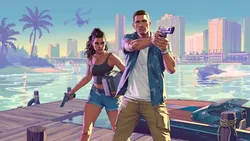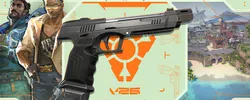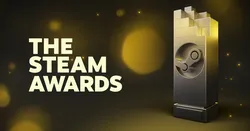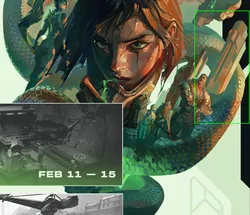Interview with Valorant Environment Artist Kevin Brunt

Hero: Hello everyone! Today I’m with SirDigitalBacon, Environment artist for Riot! Can you introduce yourself to our readers?
Kevin: My name’s Kevin Brunt, I’m a senior environment artist for Valorant, I’ve been working on maps like Pearl, Fracture, Breeze and Lotus.
Hero: What does an Environment Artist for a game like Valorant do?
Kevin: We work on building the environments, materials, lighting, textures. Pretty much everything that accompanies the environment creation process. As well as doing performance, bug fixes, so if a player finds something, it’s our job to fix it. Overall the general creation of the art around Valorant’s maps.
Hero: So when and how did you start working for Riot?
Kevin: They contacted me two and a half years ago as I was working for another company. I had 8 interviews to get there. I’ve been working in this industry for 13 years, I also had a lot of experience working on shooters.
Hero: How did you learn to design in 3D, did you go to school or did you learn on your own?
Kevin: I dabbled a bit when I was young, but where I’m from it’s not considered as a field so I didn’t take it too seriously. Until I decided that it was something I wanted to pursue back in 2008 so I switched career paths and took art.
Hero: On what other projects have you worked before Valorant, inside or outside Riot?
Kevin: I only worked with Riot for Valorant, but I started on Battlefield 3 as a motion capture artist, I worked on Resident Evil Operation Racoon City as an environment artist, and then I worked on Plants vs Zombies series for 10 years, I also did a short stint on the solo player campaign Star Wars battlefront 2. I worked on Sleeping Dogs also. I’ve been fortunate in my career!
Hero: What's the process behind creating the environment of a new map? What things are important to take into account?
Kevin: We go through the design phase, the map theme. Then we start with a “blockout” which will be just block meshes, to try and get the angles, to create the space. Once it’s approved, they’ll pass us the design so we can start the major silhouettes modeling and temp lighting so we can get the vibe of the environment. It also helps the other creative art departments. The “blockout” stage usually takes 8 weeks. Then we’ll go to production where we’ll get the textures on the walls and identify the materials and sets we need to build. The polish state is where we identify the things we want to improve, we always try to focus on the composition, not having certain gameplay spaces too busy for competitive play.
The final process is the performance and bug fixes. We have a very limited amount of texture memory to increase the player's FPS. Compared to other games I worked on, it’s very challenging.
Hero: What's your favorite map visually?
Kevin: I really enjoy Ascent and Split. I also like Pearl, but the thing I really love about Ascent is that it really nails Valorant’s style with the murals and the simplification of the area. It’s actually the first map that was created.
Since I’ve been part of the team, Pearl is probably my favorite even though it was very challenging from a lighting standpoint.
When it comes to my favorite map to play, I’d say Ascent but Lotus is fun too, we have a lot of variety in our map pool.
Hero: That’s true, which map or section has been the most challenging to design?
Kevin: It depends, we've had different challenges on many maps, every map tends to be its own beast. I would say Fracture because that was just a short time frame that we had to get that map out.
But I think Lotus for me was probably one of our most challenging maps just because the design was very different. We've had a lot of problems trying to balance the doors because they're a very unique gimmick.
Hero: How is the atmosphere working at Riot with other coworkers?
Kevin: It's great. I work remotely, but I do fly down every month and a half to stay with the team. It's been challenging, I'd say, over the pandemic and working remotely. We've learned to adapt. It still works with the hybrid work model. Some people come to the office and then some people work remotely or work from home. I think we do a pretty good job keeping communication going and our team.
I think a month ago I was in my first time in the office in three years. It felt weird, but it was great seeing people!
Hero: For sure! Do you play Valorant in your free time? Do you play with other developers or friends?
Kevin: Yeah, all the time. Everyone really loves playing the games that they make. We're very passionate about it.
Hero: That’s great! Do you have any hobbies or passions apart from like 3D design?
Kevin: I mean, I'm very obsessed with creating game art. I do teach as well. That's something that's I'm just kind of naturally passionate about. So I'm always working on my craft, getting into a lot more production stuff with cameras and things like that. As of like the past couple of years, that's been kind of a hobby of mine and doing editing and things like that as well.
Also keeping up to date in sports, I'm a big hockey fan!
Hero: What are your short and long term ambitions?
Kevin: I don't know where that's going to go. It's challenging to predict, if I'm going to be the lead or something in that field in the future, we'll see where that goes.
I want to go down the principal track where I can just focus on my craft, even though it's something I do enjoy, helping people, helping teams get to their milestones is something I care more now as I've gotten older.
Hero: Okay. Do you follow the Valorant Esports tournaments?
Kevin: I do a bit, but it's hard there's just so many teams now. I'll watch as much as I can while I'm working. I know a lot of other members on the team are a lot more passionate about it. They're always rooting their teams. It gets very chatty at work, especially the design team. And that's actually one thing to highlight, the majority of our decisions, every level design or every map we do, it's all around competitive play. We value esports so much.
Hero: What would you say to someone interested in working as a 3D artist for Valorant?
Kevin: I think the major thing is having a direction in your portfolio. A lot of younger aspiring artists I speak to, tend to be all over the map and they're not as targeted with their portfolios. And the challenge with that is they might have all these weapons in their are in their portfolio, but they're trying to get a job at as an environment artist.
And so they're not necessarily always demonstrating employable skills for the job.
So the main thing I would say if you're trying to get a job as an environment artist, is to showcase crafted materials, show how to reuse multiple components within texture sheets to create other assets.
And now it's more so than ever. If you don't have quality work, you're just not going to get a job, at least in the higher levels of the industry, which I know a lot of students are always aspiring to.
Taking three years to build your craft to be employable, there's nothing wrong with that. It can take three, sometimes five years for an artist to build up their quality of work.
Hero: For sure! Is there anything else you would like to mention to our readers?
Kevin: One thing that's really exciting about Valorant's maps is that No map is dead.
We always can take maps out of rotation and change them, evolve them. And I think that's one thing for us that's been pretty exciting. Address player feedback when something's just not working.
You'll probably notice this when you play the game, or if you look where your cursor is to try to get a headshot, you'll see a lot of times we'll have trims or other bits of art that will guide you to make it a little bit more easier for you to aim.
You don't have anything that gets in the way for you to get that shot, that's something that we pay a lot of attention to. And additionally, when you play our maps, look up, you'll see a lot more. There's a lot of art actually all over the place that the players never get to see!
Hero: Awesome, thank you for your time!
Kevin: Thank you!
Make sure to check out Kevin's Twitter: @SirDigitalBacon







































